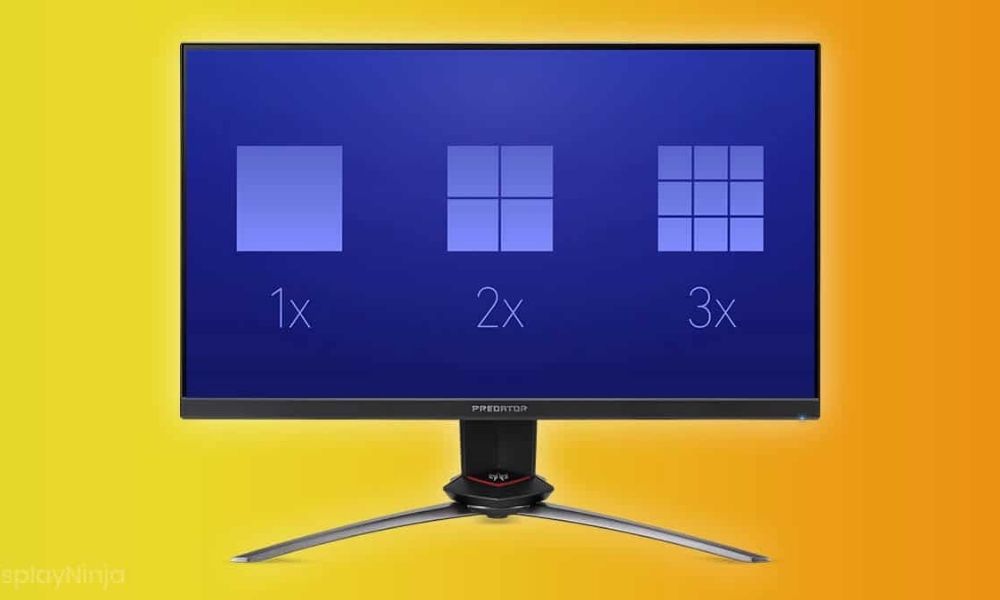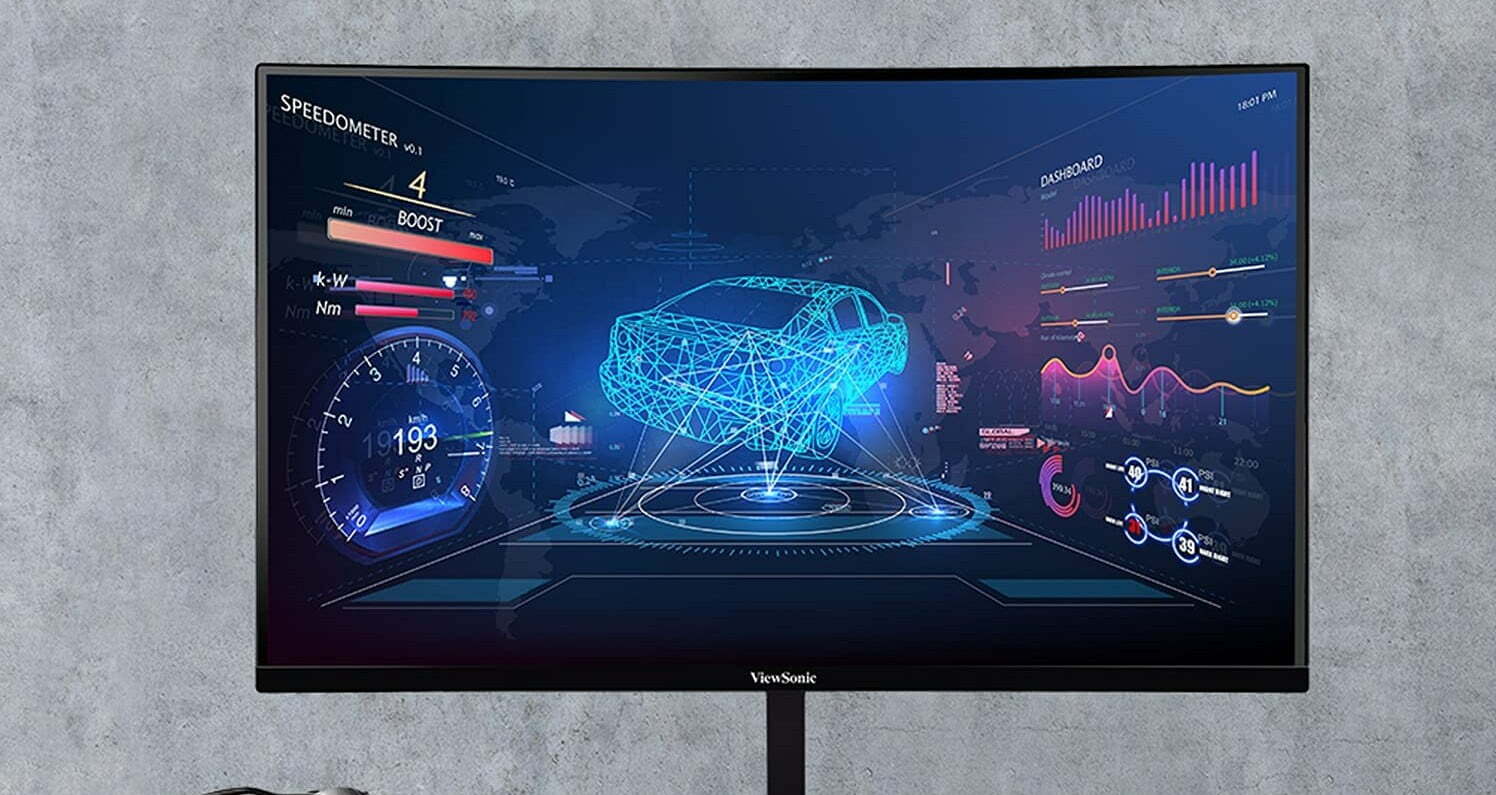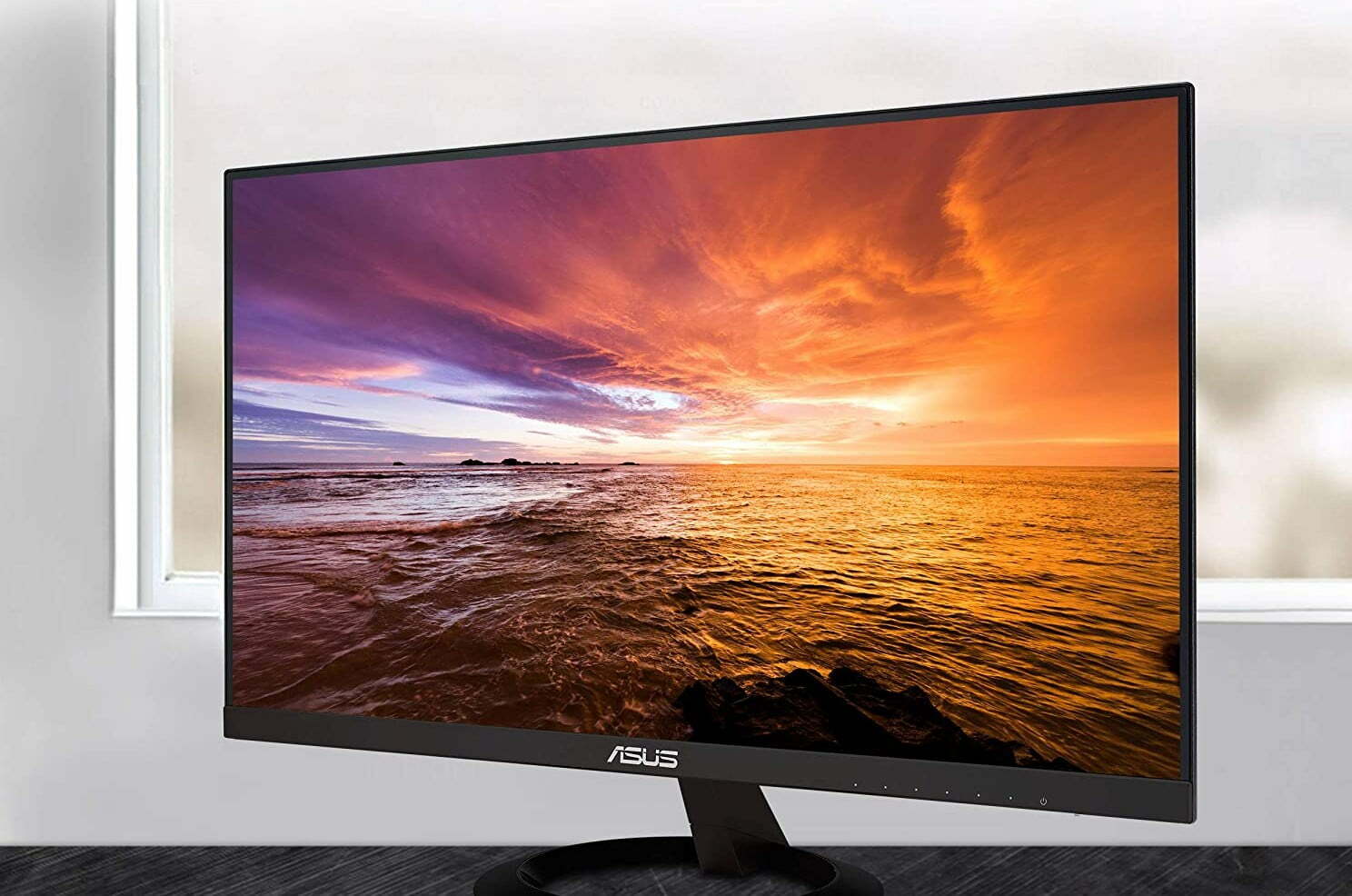Pixel density on monitors is an important thing to look at when considering the quality of the image you want. Continue reading to learn about display pixels and PPI to make sure that you get the best quality monitor for you.
Key Takeaways:
- Pixels are the smallest elements of an image on a monitor.
- Pixel density measures the number of pixels per inch on a display.
- Pixel density is different from the resolution of a monitor.
Pixel Density and PPI on Monitors
There are a lot of factors to consider when looking at the quality of monitors, including pixel density, or PPI.
What are Pixels?
Pixel is a word that comes from combining the term “picture element.” Pixels are the smallest elements of an image. Each pixel “displays” a certain color and all of those different colors add up to the image you see on the computer monitor screen. Pixels make up the resolution of a display. When a monitor has a higher resolution, it has the ability to display more pixels, leading to more detailed images.
Tip: When a monitor has a higher resolution, it has the ability to display more pixels, leading to more detailed images.
Aren’t pixels great? Except, monitors didn’t always use pixels. In fact, older CRT monitors used electron beams and phosphor dots to create an image on your screen. No pixels or pixel density with these ancient displays. If you want a brief history lesson, get it from our resource article talking about what is a CRT monitor.
What is Pixel Density?
Pixel density measures how many pixels are displayed in one square inch of a screen. Pixel density is referred to as Pixels Per Inch, or PPI. Generally, higher PPI makes for a better viewing experience and sharper images. However, you have to consider the resolution of the screen and the physical size of the monitor. At a certain point, you won’t notice the difference in having a higher PPI.
Tip: Pixel density measures how many pixels are displayed in one square inch of a screen
Warning: At a certain point, you won’t notice the difference in having a higher PPI
Pixel Density vs. Resolution
Pixel density is becoming more and more popular as a way to determine a computer monitor’s picture quality. Resolution is the measurement of the height and width of pixels that can be displayed on a given screen. PPI, on the other hand, is the measurement of physical pixels on a screen. Therefore, a 27” 1080p monitor and a 32” 1080p monitor have the same resolution, but a different pixel density. The 27” monitor will contain more pixels per inch than the 32” display.
Warning: Therefore, a 27” 1080p monitor and a 32” 1080p monitor have the same resolution, but a different pixel density
Related Posts:
STAT:
With the current state of display technology, even basic computer screens have a high pixel density in the 115 to 160 range.
https://medium.com/@peternowell/pixel-density-demystified-a4db63ba2922#:~:text=Pixel%20density%20refers%20to,space%20(often%20an%20inch).&text=Screen%20technology%20has%20evolved%20tremendously,(%E2%80%9Cppi%E2%80%9D)%20range.
Sources:
https://en.wikipedia.org/wiki/Pixel_density
*https://www.youtube.com/watch?v=-pXdaG2kgWw
https://en.wikipedia.org/wiki/Dots_per_inch
https://en.wikipedia.org/wiki/Computer_monitor
https://en.wikipedia.org/wiki/Electronic_visual_display




































![Best 27 Inch Computer Monitor in [year] 27 Best 27 Inch Computer Monitor in 2026](https://www.gadgetreview.dev/wp-content/uploads/how-to-buy-the-best-computer-monitor.jpg)
![Best BenQ Monitors in [year] 28 Best BenQ Monitors in 2026](https://www.gadgetreview.dev/wp-content/uploads/best-benq-monitor-image.jpg)
![Best ASUS Monitors in [year] 29 Best ASUS Monitors in 2026](https://www.gadgetreview.dev/wp-content/uploads/best-asus-monitor-image.jpg)
![Best Dell Monitors in [year] 30 Best Dell Monitors in 2026](https://www.gadgetreview.dev/wp-content/uploads/best-dell-monitor-image.jpg)
![Best HP Monitors in [year] 31 Best HP Monitors in 2026](https://www.gadgetreview.dev/wp-content/uploads/best-hp-monitor-image.jpg)
![Best Lenovo Monitors in [year] 32 Best Lenovo Monitors in 2026](https://www.gadgetreview.dev/wp-content/uploads/best-lenovo-monitor-image.jpg)
![Best ViewSonic Monitors in [year] 33 Best ViewSonic Monitors in 2026](https://www.gadgetreview.dev/wp-content/uploads/best-viewsonic-monitor-image.jpg)
![Best Gigabyte Monitors in [year] 34 Best Gigabyte Monitors in 2026](https://www.gadgetreview.dev/wp-content/uploads/best-gigabyte-monitor-image.jpg)
![Best Monitors for PS4 Pro Gaming in [year] 35 Best Monitors for PS4 Pro Gaming in 2026](https://www.gadgetreview.dev/wp-content/uploads/best-monitors-for-ps4-pro-image.jpg)
![Best Monitor for Xbox Series X in [year] 36 Best Monitor for Xbox Series X in 2026](https://www.gadgetreview.dev/wp-content/uploads/best-monitor-for-xbox-series-x-image.jpg)
![Best Acer Monitors in [year] 37 Best Acer Monitors in 2026](https://www.gadgetreview.dev/wp-content/uploads/best-acer-monitor-image.jpg)
![Best MSI Monitors in [year] 38 Best MSI Monitors in 2026](https://www.gadgetreview.dev/wp-content/uploads/best-msi-monitor-image.jpg)
![Best SAMSUNG Monitors in [year] 39 Best SAMSUNG Monitors in 2026](https://www.gadgetreview.dev/wp-content/uploads/best-samsung-monitor-image.jpg)
![Best LG Monitors in [year] 40 Best LG Monitors in 2026](https://www.gadgetreview.dev/wp-content/uploads/best-lg-monitor-image.jpg)
![Best AOC Monitors in [year] 41 Best AOC Monitors in 2026](https://www.gadgetreview.dev/wp-content/uploads/best-aoc-monitor-image.jpg)
![Best Philips Monitors in [year] 42 Best Philips Monitors in 2026](https://www.gadgetreview.dev/wp-content/uploads/best-philips-monitors-image.jpg)
![Best Monitors For PUBG in [year] 43 Best Monitors For PUBG in 2026](https://www.gadgetreview.dev/wp-content/uploads/best-monitor-for-pubg-image.jpg)
![Best Stream Decks in [year] 44 Best Stream Decks in 2026](https://www.gadgetreview.dev/wp-content/uploads/best-stream-deck-image.jpg)
![Best Monitors for Streaming in [year] 45 Best Monitors for Streaming in 2026](https://www.gadgetreview.dev/wp-content/uploads/best-monitor-for-streaming-image.jpg)
![Best Monitors For Flight Simulator in [year] 46 Best Monitors For Flight Simulator in 2026](https://www.gadgetreview.dev/wp-content/uploads/best-monitor-for-flight-simulator-image.jpg)




















